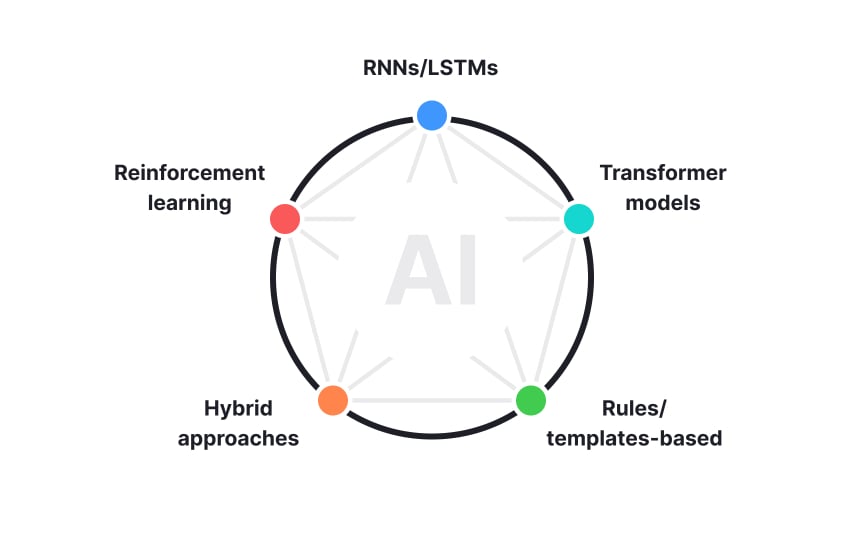AI writing models
There are several key AI models for natural language generation:
- Transformer models: These neural networks, exemplified by OpenAI's GPT, Google's Gemini, and Anthropic's Claude, excel in language modeling and generation due to their powerful Transformer architecture.
- RNNs/LSTMs: Though less common today, recurrent neural networks (RNNs), including long short-term memory (LSTM) models, were once widely used for text generation. For example, Google’s Gmail Smart Compose uses LSTMs to suggest sentences.
- Rules- and template-based: Early AI writing systems, such as Mail Merge, utilized hand-coded rules and templates. Unlike neural networks, this method doesn't learn from data.
- Hybrid approaches: These combine neural networks with rules, templates, and human oversight to enhance coherence and control. Jasper, for instance, utilizes GPT-3, Grammarly, and human input.
- Reinforcement learning: Some systems employ reinforcement learning to train AI writers, optimizing for coherence and relevance. Uber AI's Grover is an example of using reinforcement learning to generate news articles.
AI writing tools with transformer architecture are most commonly used today, thanks to models like GPT demonstrating strong performance and ease of use.




